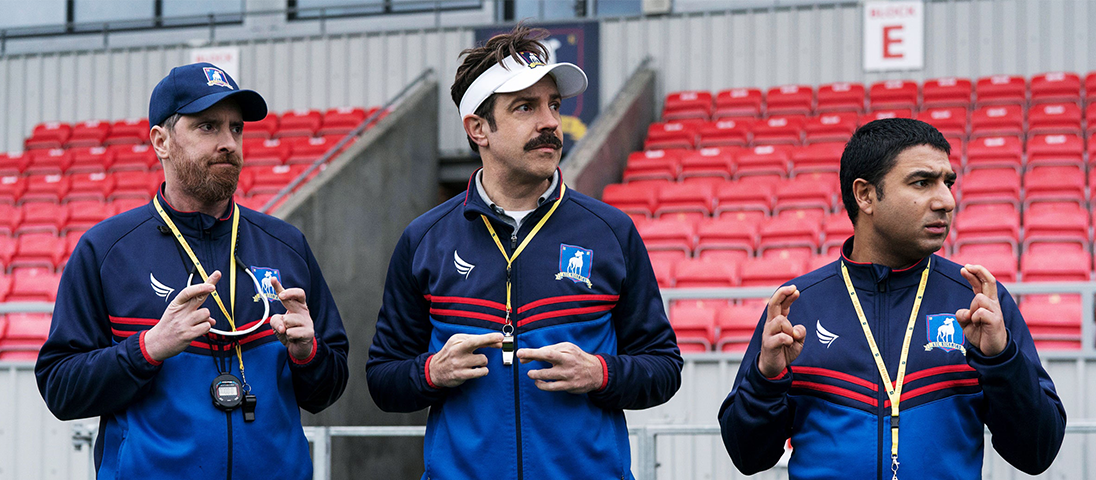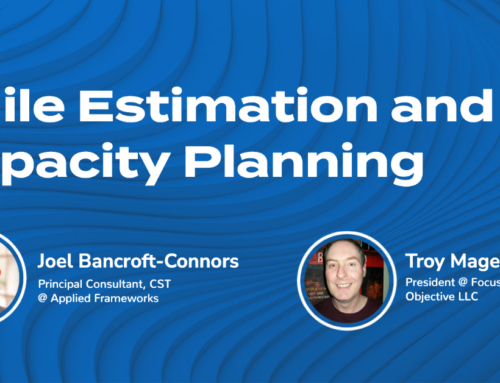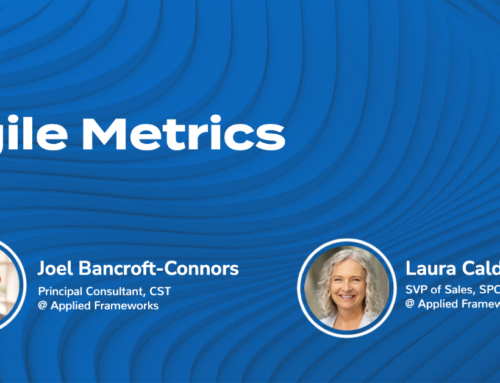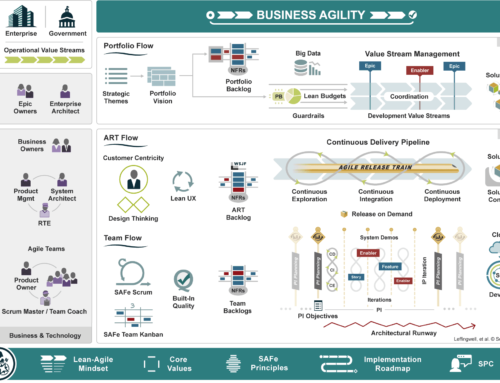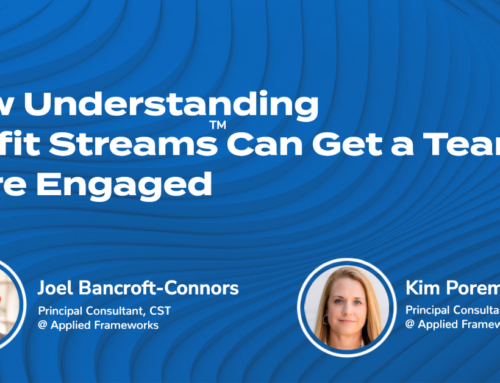Author’s note: For purposes of this article on picking the right Agile Coach, we’re assuming you’re looking to adopt the principles of business agility and implement Lean-Agile practices to get there. Whether or not business agility is right for you in the first place is an entirely different topic not covered here.
Congratulations, you’ve decided to adopt Business Agility!
Everyone is very excited to embrace innovation and deliver more customer value, faster. There is one small, teensy matter to contend with, though . . . How are we going to pull it off?
HOW you do it is largely dependent on WHO
Organizations are made up of people and any change will require the right people to guide that change. As Jim Collins says in Good to Great, the first step is to “Get the right people on the bus.” You get the right people on the bus and then decide where you are going to drive the bus.
When your business commits to agility, you don’t start by choosing Scrum vs Kanban or SAFe vs LeSS. First, you assemble a team and set a clear goal. Only then do you work towards the HOW.
Picking the right Agile Coach for your team can determine the success of your agile change. So how do you find the right one?
Why you need an Agile Coach
The first question you might ask is, “Do we really need a coach? Can’t we just do this ourselves?”
Lean-Agile practices are not new ideas anymore. There are dozens of books, a long list of online courses, and hundreds of YouTube videos that will teach you the basics.
I’m a huge fan of DIY as a principle. I’ve become a regular handyman thanks to YouTube. I am capable of fixing my toilet, replacing a valve on my water heater, and putting new headlights on my car.
I also know my limits. If my car needs brakes, I go to a professional. Yes, I could get the parts and read up on how to do it myself. In fact, in my 20’s I did just that. And it cost me several thousand dollars and a wrecked car because I didn’t do it right!
Organizational change is one of those things that falls into the complex, “call an expert” space. While you can try DIY, and you may even be successful, it will almost certainly cost you more time and money than getting expert help. Or, you might end up like me, with no brakes, no car, and a lot of debt.
Qualifications of an Agile Coach
This subject could fill an entire article of its own — and I’ve written one on Evaluating Candidates with the Agile Coaching Growth Wheel. In the meantime, here are two tips when considering the qualifications of your potential Agile Coach:
- Training: Not all training certifications are created equal. There are two aspects to look at, the type of learning and the depth of learning.
- Type of Learning: Instructor led learning beats self-study anytime.
- Depth of Learning: A Scrum Alliance Certified Scrum Master has had 14-16 hours of instruction and and passed a test. A Scrum Alliance Certified Scrum Professional has had around 50 hours of instruction and a minimum of two years of practical experience.
2. Experience is key: Hands-on experience with Lean-Agile beats out any amount of training.
- Some of the best Agile Coaches out there have no formal certifications. They do have a measurable history and track record of success.
- Evaluate skills based on what you need. The Scrum Alliance has a useful tool for thinking about what skills an Agile Coach needs.

Which is better, FTE or Consultant?
The Case for a Full Time Hire
As a paid employee of the company, the full-time Agile Coach is in it for the long haul. They are directly invested in the long-term well-being of the company, often in the form of stock options.
Once uncommon, the full time Agile Coach is now a well established position in many companies. Companies are recognizing that change is not a one-and-done activity. To achieve a state of business agility requires constant focus and fine tuning.
Benefits of hiring a full-time coach: Business agility is a journey of constant adaptation — not a destination. And if your journey is never truly over, having a full-time coach means you have someone helping you no matter where you are in your journey.
Something else you gain is organizational knowledge. There is only so much a consultant can learn about a company in the typical consulting arrangement. Your full-time coach knows the people, the process, the history, and where all the potholes are. They don’t have to “come up to speed,” and they have plenty of time to build strong relationships.
Downsides of hiring a full-time coach: Being part of the system impacts the ability to affect large-scale change. And unless your Agile Coach is a vice president or higher, with a big army of direct reports, they rarely have the authority to make sustained change.
The Case for the Consultant
Consultant coaches are the “heroes for hire” of the business world. They have deep expertise and a broad background of knowledge gleaned from years of experience. The consultant’s job is to come in, solve the problem, and then ride off into the sunset while you wonder aloud, “Who was that masked coach?”
Benefits of hiring an agile consultant: They are the expert. You hire them because they have a deep knowledge about your situation. They know how to fix most problems, and thanks to the hero aura, they have the influence to get the solutions in place.
In contrast to a full-time coach, even the lowest-tier consultant carries authority equal to a director and often has the ability to go all the way up to the CEO to guide what should be done. When you need something done fast, hiring a consultant is often the most expedient solution.
Sometimes it is just the outside perspective and voice that is needed. I’ve lost count of the number of clients who have said, “I just need you to tell leadership what I’ve been saying for a year. They’ll listen to you.”
Downsides of hiring an agile consultant: Eventually, your “hero for hire” is going to leave. And that is usually a fixed-schedule event—it’s the rare consultant who has a scope-driven contract and stays until the work is done. Just like your average product release, they have a fixed schedule and way more features than can ever hope to deliver.
This is a good thing. No consultant should become like a permanent fixture in your organization. Because no matter what, eventually they will leave and take with them both their expertise and all the company knowledge they have gained.
This requires the consultant to work fast to get everything done. And, like in software, when you work under a deadline, you can end up sacrificing quality or documentation. When the consultant rides off into the sunset, your implementation may be incomplete, have undetected flaws, still have organizational resistance, or lack the education handoff needed to sustain the change. I know of many agile transformations that were initial successes and then slid back into their old waterfall ways because they lacked a sustaining force. I can think of one company where they have gone through at least four consultant guided transformations that all ended up failing because they didn’t stick after the consultants left.
Not all consulting firms are created equal. From the “single shingle” through the dedicated consulting firms to the resource pool firms, they all have pluses and minuses. Choose the one that works with your organization.
Don’t Bother with Staffing Agency Contractors
I’m not going to provide a case for the contract Agile Coach. By “contract” or “contractor,” I mean an individual who is typically hired through an agency that specializes in workforce augmentation roles (outside the US, the term “contractor” can often mean the same thing as “consultant” described above).
The contract coach is the worst of both worlds. They are staff augmentation, so they are inside the organization structure like an FTE and almost always in a bottom rung individual contributor role. Because of this, they usually can’t call on the expert authority of a consultant. I’ve not only seen this fail time and time again, but I’ve been in that failure position personally. Just don’t do it.
The Scrum Master Exception
The exception to this is if you’re hiring a Scrum Master to help a single team. In this case, hiring them as a contractor is a good solution and often the better of the three. If you are planning on growing your practice and you know you’re going to need full time Scrum Masters eventually, hiring contract-to-hire gives you an opportunity to “try before you buy.” The downsides of contractors being staff augmentation does not apply in the Scrum Master role like it does in an Agile Coach role.
The Secret Combination to Picking the Right Agile Coach
For business agility to take hold in an enterprise, you must take a little from column A and a little from column B. Consultants are ideally positioned to effect change. Full time employees make it stick.
Start by hiring a good enterprise-class agile consultant (again, choose wisely). Bring them in to help you find your path and get you on it. They will have the ability to overcome institutional inertia and get the change rolling. Part of their work is to set you up for continued success after they leave. Before that, they need to help you raise up an internal resource or bring in an external resource to carry on as your full-time coach.
The full-time coach will then continue forward using the momentum of the agile consultant. They will keep the transformation on the rails and act as the guides whenever things start to get lost.
By combining the authority and aura of the consultant with the stable expertise of the full-time coach, you will put yourself on the road to successful transformation.

